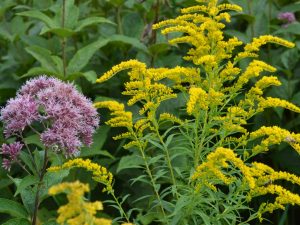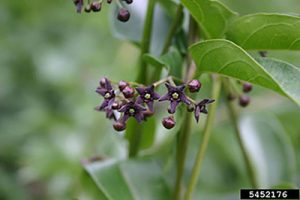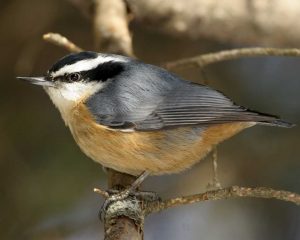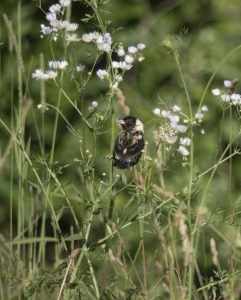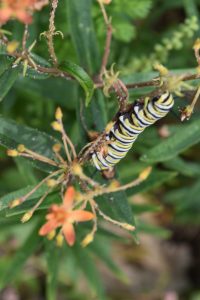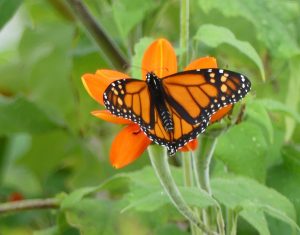Gwyn Loud, Trustee of the Lincoln Land Conservation Trust and Rural Land Foundation, has been writing a wildlife column for the Lincoln Journal since 2008. We are pleased to now additionally feature her column on the homepage of the LLCT website! Gwyn welcomes your sightings, pictures, and questions at 781-259-8690 or gwyn_loud@comcast.net. Gwyn has been birding since she moved to Lincoln in 1968 and was on the first salamander committee and wildlife advisory committee.
August brought record-breaking heat and humidity as well as enough rain, often in storms, to keep most plants growing. Now the air feels like fall, and the sun is setting noticeably earlier. The autumnal equinox arrives on September 22 at 9:45Pm EDT. This is the precise moment that the earth’s axis, which is always titled at approximately 23 degrees, is not pointing either toward or away from the sun. If we lived at the equator we would experience equal hours of daylight and darkness at that time. Day length is affected by latitude, so here we will not actually have twelve hours of darkness and twelve of daylight until September 25-26. This month look to the evening sky for a show of planets: a star-gazing friend writes, “Bright Venus is sinking evening-by-evening toward the western horizon as it moves between us and the Sun. Jupiter is to the left of Venus, higher and (apparently) brighter. To the left of Jupiter is Saturn and to the left of Saturn is fading Mars.”
Goldenrod, now in full bloom in fields, is often mistakenly blamed for allergies. The cause is usually the inconspicuous small green flowers of ragweed, also in bloom now. Seeds and berries are all around us, important wildlife food. Pokeweed, for instance, has purple berries and is a favorite of birds such as robins. Robins have even been known to get drunk after eating too many pokeweed berries which have “gone by”! Acorns are appearing and I was nearly hit on the head by hickory nuts knocked to the ground by a squirrel. One unwelcome plant is the invasive black swallowwort. It is a deep-rooted vine with dark green leaves and seed pods rather like skinny green milkweed pods. Please collect these pods and put them in the trash before they open and send thousands of seeds off on the wind.
Birds of interest reported over the past month include three common loons at different times on Flint’s Pond, indigo buntings, orchard orioles, two solitary sandpipers at the Deer Pen Pond at Drumlin Farm, bank swallows at Boyce Field, and a least bittern (listed as Endangered in Massachusetts) in the marsh behind St. Anne’s. A pair of red-breasted nuthatches has been at Drumlin Farm all summer and we recently had one at our feeder; this species is one of several “irruptive” species which usually breeds in the boreal forest but comes south to New England when food supplies farther north are scarce. Bobolinks nested successfully in good numbers in Lincoln this summer, both at Farm Meadow and Drumlin Farm.
Except for Canada geese honking overhead, bird migration in the fall is primarily a quiet affair and suddenly we notice that summer favorites, such as Baltimore orioles, rose-breasted grosbeaks, and swallows have vanished. Flocks of grackles have been moving through and a few passing warblers have been spotted. I enjoyed watching many chimney swifts swirling over Valley Pond recently and Norm Levey documented 137 migrating common nighthawks at dusk (over six evenings) from the top of the drumlin at Drumlin Farm. Nighthawks are not hawks but are in the nightjar family. They eat insects on the wing and are in decline, in part due to declining numbers of insects such as mosquitoes, victims of pesticides. Ruby-throated hummingbirds, which have been feeding on tiny insects, nectar from flowers and at sugar-water feeders all summer, will head south within a couple of weeks. Most will go to Central American but some over-winter on the Gulf coast.
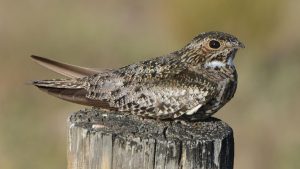
An insect much in the news is the emerald ash borer, a metallic green beetle, about one half inch long, which leads to the death of ash trees. According to the state Dept. of Conservation website, “The invasive pest was first detected in Massachusetts in 2012 . Since its initial find, the emerald ash borer has been detected in eight counties: Berkshire, Essex, Hampden, Hampshire, Middlesex, Norfolk, Suffolk, and Worcester. The entire state of Massachusetts is currently part of the national quarantined zone, limiting the movement of all hardwood firewood, and green wood products, nursery stock, and any plant materials from any ash species in an effort to stop the spread of the beetle.” There are also biocontrol methods underway.
On a happier note, this has been a good season for monarch butterflies, with numerous sightings in Lincoln and robust populations in many parts of North America. The adult monarchs we see at this time of year are in the diapause stage, meaning that they will not lay eggs but will migrate to the mountains of Mexico to overwinter, waiting to mate and lay eggs next spring before starting north. Monarch populations have declined ninety percent over the past twenty years. We can each help by planting and protecting milkweed on our private property and conservation lands.
Various mammals have been reported including coyotes in several locations. A resident of Battle Road Farm in North Lincoln writes, “Whenever TAPS is played at the base (around 9:00 or 10:00PM) the coyotes will often respond to the music by singing/howling back. It is like natures’ concert!! “ Beavers have been increasing in town. In the marsh behind St. Annes, for example, there are at least two family groups and perhaps a third. Young woodchucks are out exploring the world; I am keeping a careful eye on a pair which has not discovered my vegetable garden…..yet.
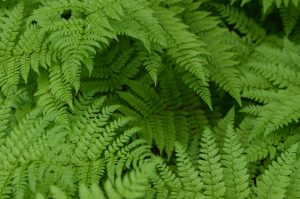
A LLCT walk to identify ferns on Sept. 27 promises to be very informative. Please check the LLCT website. www.lincolnconservation.org. to learn details about this and other upcoming walks and events.
© Gwyn Loud


